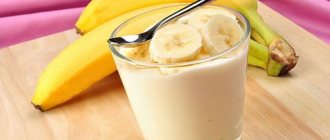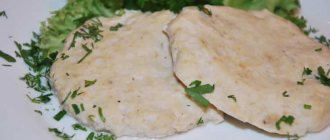Mozzarella is a classic Italian soft pickled cheese. The first mentions in literature about this type of cheese date back to the Renaissance. In 1570, mozzarella cheese was included as one of the ingredients in many dishes in the book of the then famous Italian chef Bartolomeo Scappi.
The name of the cheese comes from the Italian word “mozzare”, which means to cut: in the process of making this cheese there is a stage of cutting the raw materials. Mozzarella is very popular both in Italy and throughout the world.
Types of mozzarella
Content:
- Types of mozzarella
- Production technology
- Chemical composition
- Beneficial features
- Harmful properties
- How to select and store
- Use in cooking
- How to cook it yourself
- conclusions
The Campania region of Italy is considered the birthplace of this cheese. Only there you can buy one-day aged cheese - the Giornata variety, which is the prototype of all mozzarellas. Homemade mozzarella giornata cheese is made without adding salt, so it does not last long. To extend the shelf life of this cheese, it is stored with brine. But such cheese is no longer considered giornata.
The exquisite delicate taste of mozzarella has ensured its enormous popularity. Modern Italian manufacturers have modified its classic recipe. Therefore, there are currently many varieties of mozzarella on the shelves, which differ in appearance, raw materials used, the presence of additional ingredients in the recipe, as well as production stages.
By shape
Classic mozzarella always has an irregular shape, similar to a ball or a large egg. But there are other, no less popular forms. In Italy, mozzarella the size of a chicken egg is produced under the name bocconcini; cheese the size of a large cherry is known as chilengi, and small balls are called perlini, that is, pearls. Freshly made cheese has a fibrous, pliable texture, so many producers braid it into braids called trecci.
According to the recipe
The real Campagna cheese is made from the milk of black buffaloes, which is why it is called mozzarella di buffala Campagna. If the cheese is made from milk obtained from buffaloes of a different color or grown in other areas of Italy, then it is called mozzarella di latte di buffalo.
To increase the production volume of this cheese, the food industry began to make mozzarella from cow's milk or a mixture of buffalo and cow's milk. These types of mozzarella are accompanied by the prefixes “fior di latte” and “con latte di buffalo” in their names, respectively. Casein contained in cow's milk impairs the absorption of nutrients from cheese, so these types of cheeses are valued much less than buffalo cheeses and are much cheaper.
In recent years, cheeses made from skim milk, as well as smoked ones, have appeared. The taste of these products only vaguely resembles mozzarella and has nothing in common with the classic recipe.
History of mozzarella cheese
Mention of this product was recorded in literary sources of the Renaissance.
Thus, it was indicated as an ingredient for many dishes in a cookbook published in 1570, the author of which was the famous Italian chef Bartolomeo Scappi. Advertising - Continued below
The production of mozzarella cheese first began in the Italian region of Campania. Today, this is perhaps the only place where anyone can purchase this one-day ripening product. Cooking mozzarella cheese in this way is typical for its variety called giornata. The variety is interesting because cheese makers do not add salt to it. It is for this reason that it is not left to stand for a long time.
For longer storage, it is recommended to store mozzarella in brine in any case. Although a product that has been in such a solution is no longer giornata, but simply classic mozzarella.
The principle of making cheese is quite interesting. First, milk is fermented using bacterial cultures, then coagulation is accelerated by adding rennet (animal) enzyme. The mass is heated until it is possible to separate the whey.
Advertising - Continued below
Next comes manual manipulation: the cheese is actively and intensely kneaded, like dough, periodically heating so that it does not harden too quickly. At the last stage, it is shaped: in the classic version, mozzarella is cut into small pieces-balls. Hence the name of the cheese - Mozzarella from mozzatura, which means “trimming”.
Production technology
To make Italian mozzarella, they take fresh black buffalo milk and add a special thermophilic starter and rennet. The resulting solution is heated to curdle the milk. After this, the cottage cheese is infused in the whey for up to 8 hours.
The finished mass is heated again to separate it from the whey. The resulting curd mass is thoroughly kneaded until it forms a stiff dough. During the kneading process, the semi-finished product is heated several times to make its surface smooth and shiny.
The plastic mass is easily cut into small pieces, which are dipped into ice-cold salt water. The type of mozzarella (bocconcini, chilengi or perlini) depends on the size of the cut pieces. The remaining whey is used to make another popular type of Italian cheese, ricotta.
Mozzarella balls are usually left in this salty brine, packaged and sent for sale. Large pieces or braids are usually vacuum packed without brine.
Chemical composition
The chemical composition of mozzarella directly depends on its recipe. The most useful and nutritious variety is the Giornata variety, but it can only be purchased in the Campania region of Italy. In our country, the most useful type of this cheese that can be found on the shelves is mozzarella di buffala Campagna.
100 g of this soft cheese contains 22 g of protein and fat, and about 2 g of carbohydrates. Such a high content of proteins and fats makes cheese a high-calorie dairy product: its energy value is 300 kcal.
Buffalo milk proteins are complete in amino acid composition, so mozzarella contains all the essential amino acids, without which the synthesis of protein molecules necessary for humans is impossible. The content of essential amino acids in 100 g of buffalo cheese is so high that mozzarella can be considered a source of tryptophan (65% of the daily value), isoleucine (57%), valine (50%), leucine and threonine (40% each), methionine (29%) , lysine (24%), phenylalanine (23%).
Buffalo milk does not contain casein, a large protein molecule that can be a strong food allergen for some people. That is why real Italian mozzarella can be eaten even by those people who have an individual intolerance to casein.
Mozzarella is a fatty product. Its fat composition is represented mainly by saturated fatty acids and cholesterol. But you shouldn’t be afraid of this, because these lipids are part of cell membranes, steroid hormones and many enzymes. In addition, saturated fatty acids are sources of fat-soluble vitamins A, D, E, and K.
Mozzarella contains few carbohydrates, so they do not play a big role. The carbohydrates of this cheese are mainly represented by mono- and disaccharides (glucose, fructose, galactose, lactose, maltose, sucrose).
Buffalo milk mozzarella contains many vitamins, macro- and microelements.
Vitamins and minerals
| Name | Content per 100 g, milligrams |
| Vitamin A (retinol) | 0,179 |
| Vitamin B1 (thiamine) | 0,03 |
| Vitamin B2 (riboflavin) | 0,283 |
| Vitamin B6 (pyridoxine) | 0,037 |
| Vitamin B9 (folic acid) | 0,007 |
| Vitamin B12 (cyanocobalamin) | 0,0028 |
| Vitamin PP (nicotinic acid) | 0,104 |
| Vitamin D (calciferol) | 0,0004 |
| Vitamin E (tocopherol) | 0,19 |
| Vitamin K (phylloquinone) | 0,0023 |
| Potassium | 76,0 |
| Sodium | 626,0 |
| Phosphorus | 354,0 |
| Calcium | 505,0 |
| Magnesium | 20,0 |
| Iron | 0,44 |
| Manganese | 0,03 |
| Zinc | 0,011 |
| Selenium | 0,017 |
Most vitamins and minerals do not meet a person’s daily requirement for them, but are well balanced and available for absorption in the intestines.
Beneficial features
Proteins and fats in the human body are plastic material for cells and are involved in metabolism. Antibodies, hemoglobin, blood plasma proteins, hormones and enzymes are synthesized from amino acids.
Mozzarella, with its frequent presence in the diet, saturates the body with complete protein, prevents the occurrence of anemia, decreased immunity, hormonal disorders, the appearance of pastiness and swelling, and impaired protein metabolism. Thanks to the participation of amino acids in the synthesis of protein-containing elements of the musculoskeletal system, mozzarella helps strengthen bones, joints and tendons.
Amino acids that make up the myelin molecule, the sheath of nerve endings, help improve brain activity, especially in people with memory impairment. Mozzarella is useful for athletes. The proteins of this cheese help build muscle mass, increase endurance, and improve the composition of synovial fluid - a lubricant for intra-articular surfaces.
B vitamins normalize digestion and restore damaged intestinal biocenosis. It is believed that regular consumption of mozzarella in food prevents the occurrence of cancerous tumors in the intestines.
It is very important to consume mozzarella for pregnant and lactating women, as well as children. In this case, we are talking only about cheese that is packaged without brine.
Taste and calorie content of mozzarella cheese
Mozzarella is a semi-hard, elastic, tender cheese stored in brine. Despite this last characteristic, the cheese tastes almost bland. And thanks to its unusual dense layered structure combined with a neutral taste and aroma, it is very easy to recognize and pleasant to use in the preparation of a wide variety of dishes.
But when it comes to the calorie content of mozzarella, it is difficult to give an unambiguous answer. Today in stores you can find cheese with very different characteristics, although its fat content always fluctuates between 45% and 50%. For example, there are light versions of mozzarella for pizza, which contain only 200 kcal, 15-16 grams of protein, the same amount of fat and no carbohydrates at all. On the other hand, there is also a “heavier” version of cheese, which contains 300 kcal, and 23-24 grams of protein and fat per 100 grams of weight.
Advertising - Continued below
Harmful properties
Despite the wide range of beneficial properties of mozzarella, its use is harmful for people with individual intolerance to lactose, casein (if the cheese is made from cow's milk) or food allergies.
Being a source of the amino acid phenylalanine, this cheese is prohibited for consumption by people with phenylketonuria.
If you have cardiovascular diseases or impaired renal excretory function, you should avoid eating cheese in brine. This can lead to increased blood pressure and swelling.
Its high calorie content makes mozzarella an undesirable product when preparing a diet for people on a diet.
How to select and store
Mozzarella is currently produced not only by Italian, but also by domestic producers. The composition of these cheeses is radically different, as is the production technology.
To enjoy the taste of real Italian mozzarella made from buffalo milk, you must give preference to manufacturers from Italy and adhere to certain selection rules:
- Cheese must be sealed. Evaluate the quality of the packaging: a self-respecting manufacturer always uses high-quality, odorless packaging materials.
- Study the label. The packaging must contain both the original manufacturer’s label and its translation into Russian. The correct label contains information about the manufacturer, composition and weight of the product, date of manufacture, conditions and shelf life.
- This product does not contain preservatives, flavors, dyes, or food additives.
- It is better to buy cheese in transparent packaging, through which the product itself and the brine can be seen. The color of buffalo mozzarella should be snow-white, without a yellow tint, and the brine should be free of flakes.
- Mozzarella should be stored in the refrigerator in the store, regardless of whether it is packaged in a vacuum or in another package. Freezing this product is unacceptable - it loses its texture.
- The shelf life at a temperature of +4°C is up to 2 months. If the packaging indicates a longer shelf life, this means that preservatives have been added to the product.
After opening the package, you need to smell the cheese: no sour or musty odors should be felt.
You should not buy mozzarella for future use. After opening the package, the shelf life of the product is reduced to 2 days (provided it is stored in brine at a temperature from +10°C to +15°C).
Mozzarella calories
The calorie content of 100 g of mozzarella cheese is about 300 Kcal
, but the indicator may vary depending on the quality of the milk and the processing method. The natural product is a low-calorie cheese, therefore it is recommended by nutritionists to be included in the menu for weight loss.
The nutritional value of mozzarella is that more than 1/5 of the product is protein, which is quite important for people who want to lose weight. The increased fat content of the product should not be taken into account, as it is quickly absorbed by the body and has a positive effect on metabolism.
Mozzarella is included in fasting days and various effective diets. A natural source of protein and a balanced amount of valuable vitamins and minerals impress both nutritionists and people skeptical of any diet.
Use in cooking
Italian mozzarella is most often consumed without heat treatment - as a snack, for example, with white wine. However, it is often added to dishes a few minutes before cooking, for example, pizza, lasagna or roast. Mozzarella is one of the main ingredients of traditional Italian Margherita pizza and Caprese salad.
This Italian cheese goes well with berries, olives, fresh vegetables, and herbs. Prepare with it:
- salads;
- snacks;
- pizza, including closed pizza (calzone);
- lasagna;
- ravioli;
- pot roast.
Caprese salad
To prepare it you will need tomatoes, mozzarella and basil. Tomatoes and cheese are cut into slices, basil leaves are added, seasoned with olive oil, sea salt and ground black pepper.
Application
Since Mozzarella cheese is of Italian origin, then, of course, it is necessary to remember the traditional dishes of this country - pizza and lasagna, which cannot do without this important ingredient. This cheese melts well and gives dishes a unique, wonderful taste. Mozzarella can be used in salads, combined with olives and basil. A very famous salad with this cheese is “Caprese”, where Mozzarella goes well with tomato and basil.
Market Analytics
- Global cosmetics market 2021: an unprecedented test for the global cosmetics industry
- Top 10 Cosmetic Research and Development of 2021
- 2020 in the beauty industry – innovation without borders
Convenient search for beauty salons on our website
Beauty salons in Moscow Beauty salons in St. Petersburg Beauty salons in Ekaterinburg Beauty salons in Novosibirsk
Latest blog posts on our website
- Naturecream / Properties of the “Sunny” oil itself
- Naturecream / “Sugar” wrinkles - or what glycation can do
- Naturecream / Esterified oils
- Naturecream / Arnica - the magical plant of alchemists
- Naturecream / Tremella Extract - Snow Mushroom Detox for Skin
- Prostye-sovety / How to visually enlarge your lips with makeup
- Naturecream / Apricot kernel oil for face
- Naturecream / MATRIXYL3000 - the best skin elasticity stimulator
- Naturecream / SPF in Natural Oils
- Naturecream / Geranium (Pelargonium) oil for skin health and beauty
Latest forum topics on our website
- Natalya / How to properly make a gelatin mask?
- Mrs._Smith / Badly sunburned! What to do?((
- Ice / Is it necessary to combine fitness classes with a diet?
- Antonova / What can be used for hair loss?
- Radio operatorKat / Who was on a protein diet?
Other articles in this section
| Red mold cheese One of the varieties of blue cheeses is red mold cheese. This cheese is already four thousand years old. The technology for preparing red mold cheese differs from the technology for preparing other cheeses in that it is washed in salt water or wine. This is the only difference. Although sometimes I use dyes during the preparation of this product. This cheese has an unusual pungent taste and a very strong aroma. There are several different types of this product. |
| Matsoni from cow's milk Matsoni is a fermented milk product that is often found in traditional Caucasian cuisine. Its complex recipe is over two hundred years old and in its homeland healing properties have long been attributed to it. |
| Amber cheese Swedish Amber cheese is the result of centuries of work to improve the taste and quality of this product and is recommended for connoisseurs of healthy and wholesome food due to its low fat content and mass of useful minerals and vitamins. Once upon a time, during the times of kings, Vikings and peasants, a country called Sweden was introduced to cheese making by Benedictine monks (in the 9th century AD). The clergy were sent on a responsible mission by King Louis I. The purpose of their stay in Sweden was to teach the rebellious and warlike Vikings to live in peace by creating dairy farms. The monks taught peasants how to care for cows and goats in order to show them how to make cheese. A little later, the Swedes themselves found their own way of making cheese by turning whey into golden brown cheese. The people of Sweden themselves are already well aware that good milk is necessary in order to get good cheese. It is called differently in different regions of the country, and in modern times it can be classified as follows: semi-hard cheese, blue cheese, whey cheese. |
| Ryazhenka 1% This delicious fermented milk product is obtained as a result of fermentation processes of alcohol and lactic bacteria. The drink has a delicate taste, slight sweetness and a beige tint. The fat content of fermented baked milk can range from 1% (low-fat) to 9%. |
| Dorogobuzhsky cheese This dairy product is known for its buttery consistency and aromatic cheesy smell. It belongs to soft cheeses. It has a spicy, specific taste due to its preparation from whole cow's milk with the addition of cheese mucus microflora, which appears on the surface of the cheese. Rennet gives softness to Dorogobuzh cheese. This dairy product has a slightly ammonia smell and a pronounced cheesy and buttery taste. Dorogobuzhsky cheese contains a huge amount of soluble proteins - this is one of its nutritional advantages. |
| Latvian cheese Latvian cheese, by its very name, indicates its belonging to a country such as Latvia, of which it is the national product. This cheese is quite popular and loved all over the world. Latvian cheese has numerous titles and awards; it is classified as a semi-hard rennet cheese. |
| Yogurt 0.1% Yogurt is considered an ancient Russian fermented milk drink. It is prepared by fermenting baked fresh milk. Currently, curdled milk has many varieties. They differ from each other by the type of milk that was used in preparation, as well as by the type and variety of lactic acid yeast. For example, according to Ukrainian traditions, curdled milk is called fermented baked milk, and this in turn indicates that this product has been recognized in almost every corner of the world. |
| Whipped cream Cream is the fatty component of milk that forms on its surface when certain conditions are met. In households, cream is extracted by simply settling the milk: collecting it from the surface. In industry, a separator or centrifuge is used for such purposes. The cream then undergoes a mandatory process of pasteurization and sterilization, otherwise it will quickly spoil. Cream should be made only from whole cow's milk. Whipped cream is made from heavy cream (at least 20% fat, preferably 35%). |
| Kefir 1.5% Kefir is one of the most popular dairy products. It is distributed everywhere - all over the globe. It is especially popular in countries such as Israel, Australia, the United States, and also in Europe. |
| Cottage cheese 0.3% The process of preparing cottage cheese 0.3%, including low-fat cottage cheese, is very simple. The milk is brought to the desired fat content, and then heated and curdled, separating into solid mass and curdled milk. The solid mass is squeezed out of excess moisture and natural cottage cheese is obtained. |
How to cook it yourself
Mozzarella is easy to make yourself at home. To prepare it, you need to take 3 liters of raw milk, rennet (10 g), salt for brine (2 tbsp). Cow's milk can be used instead of traditional buffalo milk.
The milk needs to be heated to 40°C, add rennet previously dissolved in boiled water and stir thoroughly. This starter must be left to ferment for 20 minutes.
The thickened milk is cut into squares without removing it from the saucepan. After this, you need to throw everything into a colander with small holes, a sieve or cheesecloth to drain the whey. Place a press on top of the milk clot. This could be a dish with a two-liter jar filled with water placed on it.
After half an hour, the squeezed cheese must be placed in a container with brine and refrigerated. After 12-14 hours, the cheese can be eaten.










